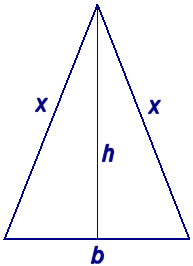"So Jacob arose from Beer-Sheva; the sons of Israel transported Jacob their father, and their young children and their wives, in the wagons which Pharoah had sent to transport him. They took their livestock and their possessions which they had amassed in the land of Canaan and they came to Egypt- Jacob and all his offspring with him. His sons and the sons of his sons with him, his daughters and the daughters of his sons and all his offspring he brought with him to Egypt" ~Bereishit 46:5-7What follows in Bereishit 46:8-27 is an enumeration of all the family members who traveled to Egypt with Jacob when Joseph sent for them to move to Egypt. We learn that, in total, there were 70 people who moved down to Egypt.
While it's not directly related to calculation, the ability to organize of information is a key skill for success in mathematics. For successful problem solving, students need to be able to identify important information, classify how the different pieces of important information relate to each other, identify the question or problem that they are tasked with answering or solving, identify the steps necessary to find the solution to their question/problem, follow through with their planned steps for finding the answer, and finally critically look at their answer to determine if it makes sense and is a sensible solution to the problem that are trying to solve.
Activity Connections:
Activity ideas in increasing conceptual difficulty:
While the Torah offers us a certain amount of organization in the way in which information is given to us, it is often helpful to map out information to gain a broader picture or greater understanding of the information. Mapping out a family tree of Jacob's descendants based on the information provided to us in the parsha is an organizational task that students of many varying levels can benefit from. Note that the grade ranges that I've listed are guideline approximations. There will always be students for whom activities come more easily and other students for whom activities are more difficult. I recommend shifting up or down within activity suggestions to properly accommodate each student's level.
- At the lower levels (grades K-2), teachers can provide students with a cut and paste chart of a family tree and the names that need to be placed on the tree and the family tree map with all the appropriate slots organized where they should be. For younger students, 70 names will be particularly overwhelming. To make it more manageable, students can work in partners or groups and just work with a single branch- one group can cut and paste Reuven and his children onto the tree, another can work on Levi and his children, a 3rd can work on Shimon and his children, etc. When all the groups have put their trees together, the class can come together to see how all the brothers' families fit together on the tree as children of Jacob.
- For slightly older students (grades 2-6), teachers can provide a blank family tree with the proper organization and slots provided. The students could find the information from the passages and write in the names. Again, to alleviate some of the pressure from the large number of names, students could be assigned a section of the tree and come together with all their pieces of the tree to see how they fit together.
- For students attempting to fill in the full chart by themselves (grades 4+), a helpful accommodation could be to have some of the names pre-filled in order to help the students begin to envision the organization on the tree and to give them some guide-points to work with. In it's entirety, such a project would need to be broken up into smaller time chunks so that students can work on sections at a time without feeling overwhelmed or frustrated.
- As students get older (grades 6+), they can fill in more and more of the chart independently. Ultimately, the goal would be for the students to be able to read the passages, create an organizational system on a blank piece of paper, and place the names of the 70 family members in their organized family tree without assistance. This task takes a good deal of vision and organizational skill, and while some students are capable of this task by middle school, others may take well into high school to be able to master these organization skills.
Some organizational points to keep in mind when planning out the family tree- how do you want to organize the sons on the tree? are you going to follow the organization in the passages? are you going to organize the sons according to birth order? are you going to group the sons according to their birth mothers?
Some follow-up analysis of the family tree:
* Based on the passages, do you have 70 people on the family tree?
Note the following which will affect the actual counting of the people:
- Er and Onan are listed as sons of Judah, but it states that they died in Canaan (therefore, they aren't counted in the 70 people).
- Yocheved is missing from the list of children of Levi, since her mother was pregnant with her when they traveled to Egypt. Since she was born on their arrival in Egypt, she is counted in the 70 people even though she is missing from the list.


